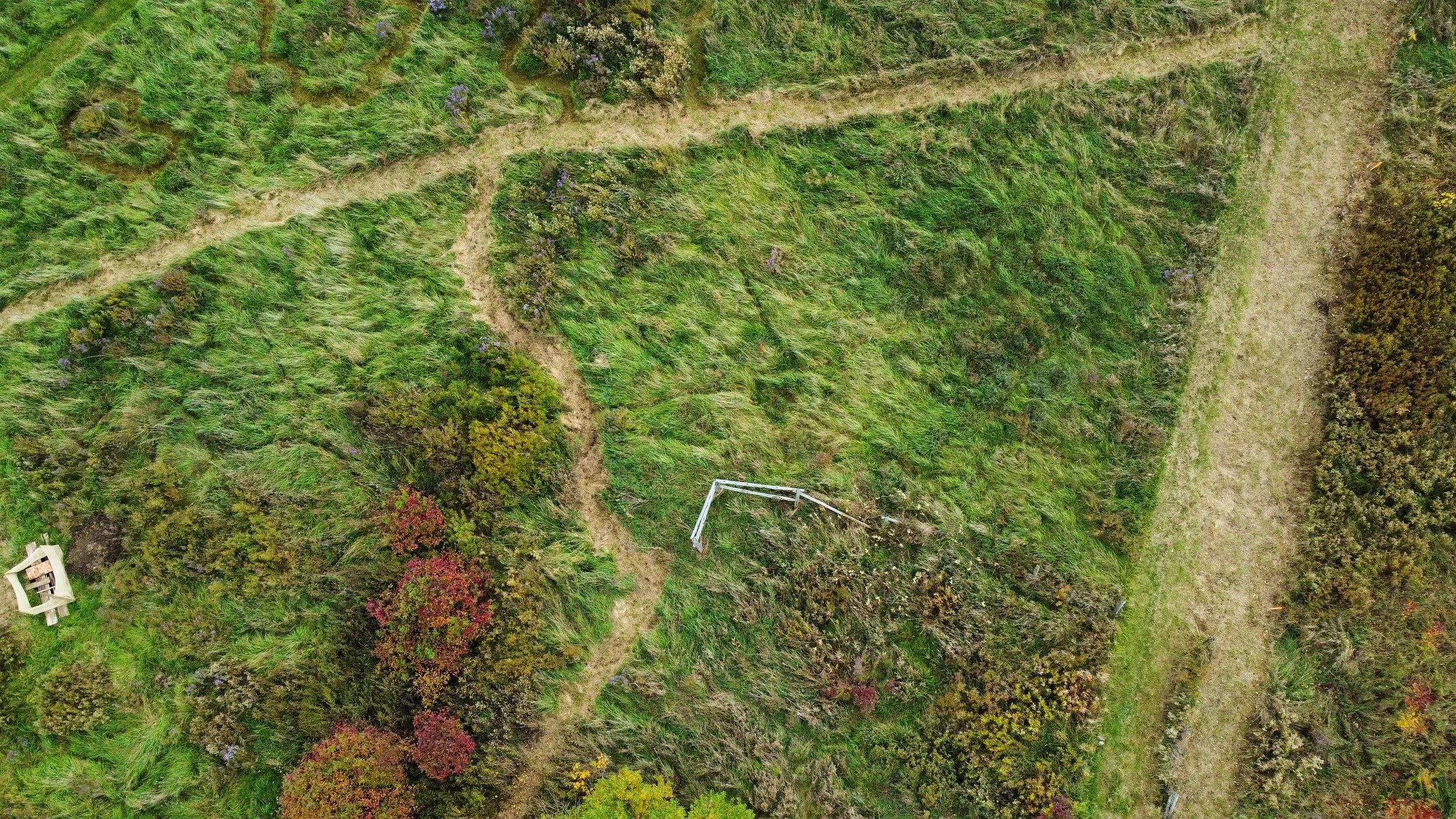When navigating this website
and interest to choose your path through it. In my life and work I value curiosity, intuitiveness and process. Also, finding the path of least resistance, which is a lesson the land teaches: for example watch how water flows overland and the path it takes, or how plants will grow between cracks in impenetrable structures.
It is also calming to the nervous system to follow the flow of things. Citing Deluze and Guattari, Tim Ingold describes the woodcutter “surrendering to the wood and following where it leads” as the axe splits wood down an existing grainline (The Textility of Making 92).
use your intuition
interconnecting, winding paths challenge the myth of linear progression
and bring focus to curiosity, intuition and process
On the land I work with, I made a series of interconnecting paths with different entry and exit points. The paths were cut intuitively, following and listening to the land. When walking these paths, I and others take a different journey each time. Feel free to do this when you engage with this website.
However, for those who prefer more certainty, there are more traditional navigational signposts in the menus at the top of each page and in hyperlinks between internal pages and to external pages to help provide some anchors. The seasons and calendar years noted on each project also provide temporal footholds.
Presenting my work on a web-based platform is also a nod to practice research, which often involves following looping lines of enquiry; as well as to intercultural practice, which values multiple perspectives and ways of knowing. Rather than a traditional, linear report, it allows the viewer to dip in and out and interact a little more with the work. It offers “a more diffuse and paticipatory mode of reading” (Bishop (2024) 48) as well as “multiple understandings” (Leeds-Hurwitz 9).
Practice research and intercultural practice is a messy, process-informed business. A website challenges the myth of linear progression and, like a novel, acts more like “a bundle, holding things in a particular, powerful relation to one another and to us” (Le Guin 34). I like that this pixelated “carrier bag” (Le Guin) can expand and contract as I add and remove things over time. This speaks to process, flattened heirarchies and the impermanence of things.
From an intercultural perspective, I acknowledge that there are indigenous and other cultural world views that also challenge the linear norm. Ursula K.Le Guin is my reference point and a writer and thinker who resonates with me.



